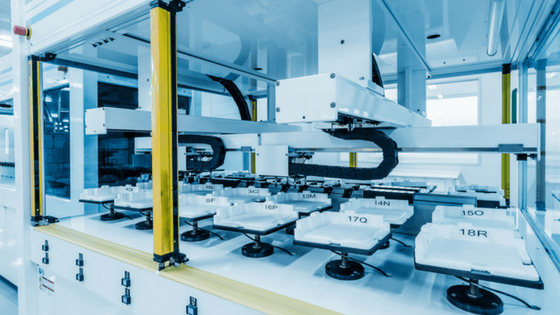
Our partners Zebra Technologies have conducted the Manufacturing Vision Study 2017, to reveal how executives in the manufacturing industry think about the sector and their predictions for future growth.
We recently explored some predictions for the manufacturing industry in the UK in previous articles about the future of the UK manufacturing workforce and Industry 4.0, and there are many parallels with Zebra’s global study – the rise of technologies like shop floor automation, IoT (Internet of Things) and smart factories are a common thread.
The Manufacturing Vision Study 2017 also explores non-tech priorities and investments, from visibility to quality assurance. It also looks at the manufacturing processes and systems that executives expect to see a decline in, over the next few years.
The key takeaway from the study though is the pervasiveness of the connected plant/shop floor. Fully connected factories are no longer a futuristic vision, but a necessary reality for more and more manufacturers. The rise in globalisation, increase in competition and escalating demand by customers for more choice and higher quality continues to lead the charge towards connectivity in manufacturing.
Future predictions for the manufacturing industry from the Manufacturing Vision Study 2017
Continued adoption of industry 4.0 and the smart factory
Today, fewer than half of global manufacturers (43%) run a fully connected operation, but 64% expect to be fully connected by 2022. Using a combination of emerging technologies, from radio frequency identification (RFID) to automated systems and wearables, workers will be able to better monitor physical processes, and business decisions can be decentralised.
Expanded usage of wearable technologies
Wearable technologies can include wearable scanners, printers, and other devices. They allow workers to move about the shop floor with the equipment and technologies they need, improving flexibility and accuracy, as tasks can be completed wherever and whenever they are required. Half the manufacturers surveyed are planning to adopt wearable technologies by 2022, and more than half (55%) of those already using wearables plan to expand that usage.
Dramatic decline in manual rocesses
Though 26% of manufacturers are currently tracking and recording manufacturing systems via pen and paper it is expected that this will drop to around 20% by 2022. By switching from pen and paper to an electronic system for tracking work in progress (WIP), manufacturers can vastly increase efficiency and reduce the risk of error.
Prioritisation of quality assurance
Achieving quality assurance was cited as being a current top priority for a majority of manufacturing executives but, by 2022, only 34% expect to rate this as a top concern. This means that manufacturers expect the quality of finished goods to be driven up. Increasingly, manufacturers are prioritising quality assurance to drive growth, throughput and profitability.
Investment in visibility
Another top priority for manufacturers is increased visibility, to support growth. 65% indicated investment in tracking technologies, like barcode scanning, RFID and real-time location systems (RTLS), as a core focus.
Expanded use of voice technology
Around half of all manufacturers in the study are planning to expand their use of voice technology as part of manufacturing processes. This is especially the case for larger manufacturers, with use of voice technologies expected to grow to 55% by 2022.
In this study, 1,100 executives and decision-makers from across the global manufacturing industry were interviewed about their views on manufacturing technologies and the manufacturing sector. Interviewees represented a global cross-section, from Europe, America, Latin America, and Asia Pacific regions, and came from a wide range of segments, including automotive, high tech, food and beverage, tobacco and pharmaceuticals, but they all had the authority to influence the purchase of manufacturing technologies.
From mobile computers and tablets to handheld scanners and barcode printers, Zebra Technologies are the market leader for ruggedised devices. Zebra devices are drop- spill- and tumble- proof, and are also enhanced with enterprise-grade software and services, making them perfectly suited to the challenges manufacturing industry.
Download the study or get more information about Zebra’s ruggedised, wearable technologies in the manufacturing sector.
Proximity are a Zebra partner. Further information on our manufacturing ERP and MES software solutions here.
Posted by Paul on 18th October 2017.

